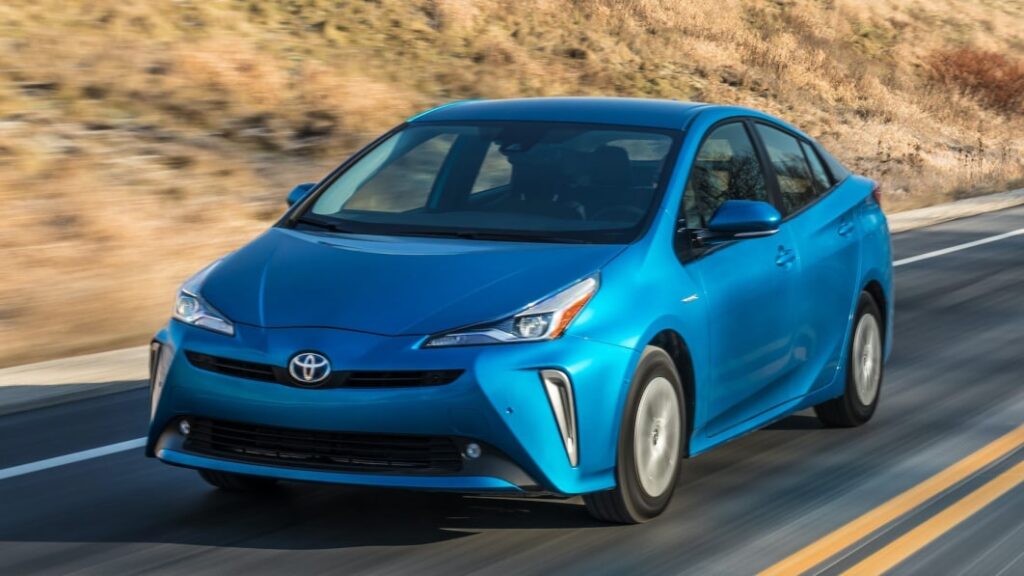The pandemic broke the used car market — now shoppers are screwed by scarcity

This
2020 Toyota Prius will cost you your first-born child.
Toyota
Used cars are still expensive, like they’ve been for years.
Now a new factor is driving prices higher.
Slow car production from 2020-2022 slammed the supply of lightly used cars in 2023, a study shows.
Ridiculously high used car prices are lingering like the last guest at the dinner party. But no matter how much you sigh or look at your watch or say “well, it’s about that time,” that old Camry isn’t getting much cheaper.
During the pandemic, used cars got incredibly expensive for a couple of reasons. Mainly, supply chain issues kept car companies from making and selling as many cars as usual, driving up prices for new vehicles and forcing buyers to the used market in droves. Hot demand and limited supply pushed prices sky-high.
Now, used cars still cost an arm and a leg, but for a different reason.
Remember how carmakers made and sold millions fewer new vehicles than usual from 2020 through 2022? Fast forward to today and those new cars are now lightly used — and in short supply. And once again we have scarcity that’s keeping prices elevated.
The consequences of that shortfall, according to a recent study from the vehicle marketplace iSeeCars.com, are kind of bonkers — even if you, like me, are by now exhausted by any talk of inflation.
Basically, if you want a vehicle that’s between one and three years old for a reasonable price, you’re screwed. You’re going to have to shop for a much older car — one with higher mileage and probably crappier technology — than if you had the same budget in 2019.
According to iSeeCars, a modest $23,000 budget could have bought an average three-year-old car in 2019. Now that can’t even get you into a six-year-old vehicle, which costs an average of $24,210 today. The average two-year-old car cost $23,886 in 2019. Today that’s skyrocketed to $37,675.
The supply of used cars that are one-to-three years old is 28% lower than it was in 2019, the firm said.
Things get even more interesting — or maybe depressing — when you break this down by specific model, which iSeeCars did. It looked at how much a three-year-old example of 48 different cars would’ve cost in 2019, and compared that with what the same budget would buy in 2023.
In 2019, a three-year-old Toyota Prius would’ve cost a reasonable $19,903. Now that’ll get you a seven-year-old Prius. Four years ago, a three-year-old Honda Civic would’ve cost you around 16,000 big ones. Now that’s roughly the price of an eight-year-old model.
Someone on a tight budget could’ve snagged a three-year-old Chevy Spark for just under $10,000 in 2019. Today, that sum will buy you one that’s nine years old. The Spark, mind you, is a tiny hatchback that basically nobody cared about until small economy cars became the only affordable option, Karl Brauer, executive analyst at iSeeCars, told Insider. Wild times.
Don’t expect lightly used cars to get dramatically cheaper anytime soon, Brauer said, since several factors creating high prices are still at play — or getting worse.
New cars are still way more expensive than they were pre-pandemic, due to lower supply and carmakers leaning into their most expensive, high-profit products. That dynamic trickles down into the secondhand market. Pent-up demand is strong. And the growing auto worker’s strike is slowing down manufacturing again just when car production was starting to improve.
“There’s really no factor contributing for used car prices to go down,” Brauer said.



